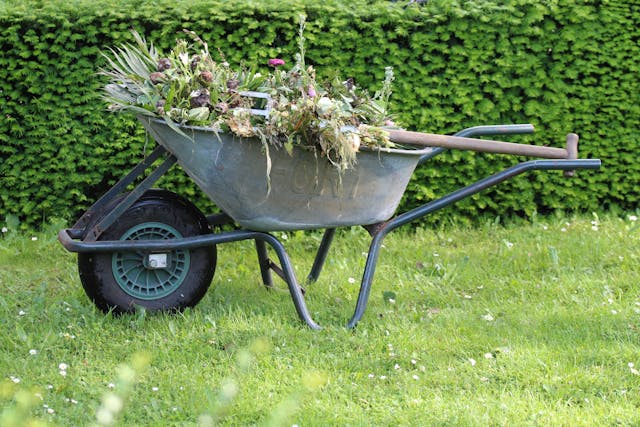If you’re like most homeowners, you already know that having a well-maintained yard not only plays a part in the curb appeal of your property, but it also provides you and your family with personal enjoyment and a sense of pride in your home. After all, coming home to a weed-infested, unkempt yard doesn’t make anyone feel good. However, homeowners sometimes falsely believe that the war on weeds is something they simply can’t win, and therefore allow their property to become an unruly mess. Fortunately, there are smart strategies available to help you keep overgrowth and weeds in check. Here’s what you need to know:
Start With Mulch
Mulch is an invaluable tool when it comes to preventing weed growth. A thick layer of mulch in your garden beds blocks the sunlight that weed seeds need to sprout. Organic mulches such as compost or shredded bark will break down over time and add nutrients to the soil. As an added bonus, mulch also retains water, which means you’ll have to water less, which will save both time and money.
Prune and Trim Regularly
Pruning your trees and shrubs on a regular basis keeps them from becoming messy and overgrown. Use quality pruning shears and have them sharpened every season to keep them in top form. Disinfecting them between different trees or groups of plants will help prevent the spread of fungal or bacterial pathogens, and don’t hesitate to seek the advice of a professional if you find yourself with questions.
Edge Your Beds and Pathways
Proper edging automatically provides any yard with a more pulled-together aesthetic, but its value goes beyond mere appearances — edging also discourages overgrowth and weed invasion. Use edging materials such as bricks, stones, or even decorative plastic borders to acts barriers to keep weeds from creeping in. Not only does this create clear boundaries and definition, but it also makes mowing and other yard maintenance tasks easier.
Choose Low Maintenance Plants
Choosing low maintenance plants don’t require as much upkeep as their more fussy counterparts may not seem like an actual weed control strategy. However, certain low maintenance groundcovers such as clover and creeping thyme crowd weeds out much more efficiently than traditional lawn grass. Also, less time doing routine landscape maintenance such as mowing means that you’ve got more time and energy to be proactive about weeds. Choosing native plants is a good option because they’re typically already acclimated to local soil and climate conditions.
Practice Consistent Weed Control
Although it seems tempting to schedule major weed control sessions several times per year, a more consistent approach is better for keeping on top of weeds — and also helps keep your property looking attractive and well-tended. Spending a half an hour per week weeding during the growing season is far preferable to spending an entire day two or three times per year doing so. Using pre-emergent herbicides in the spring can give you a head start on weed control. However, be sure to use these products only as directed, and use particular caution if you’ve got children or household pets whose skin may become irritated by newly applied chemicals. Always seek the services of a professional landscaper for anything that seems beyond your capabilities.






